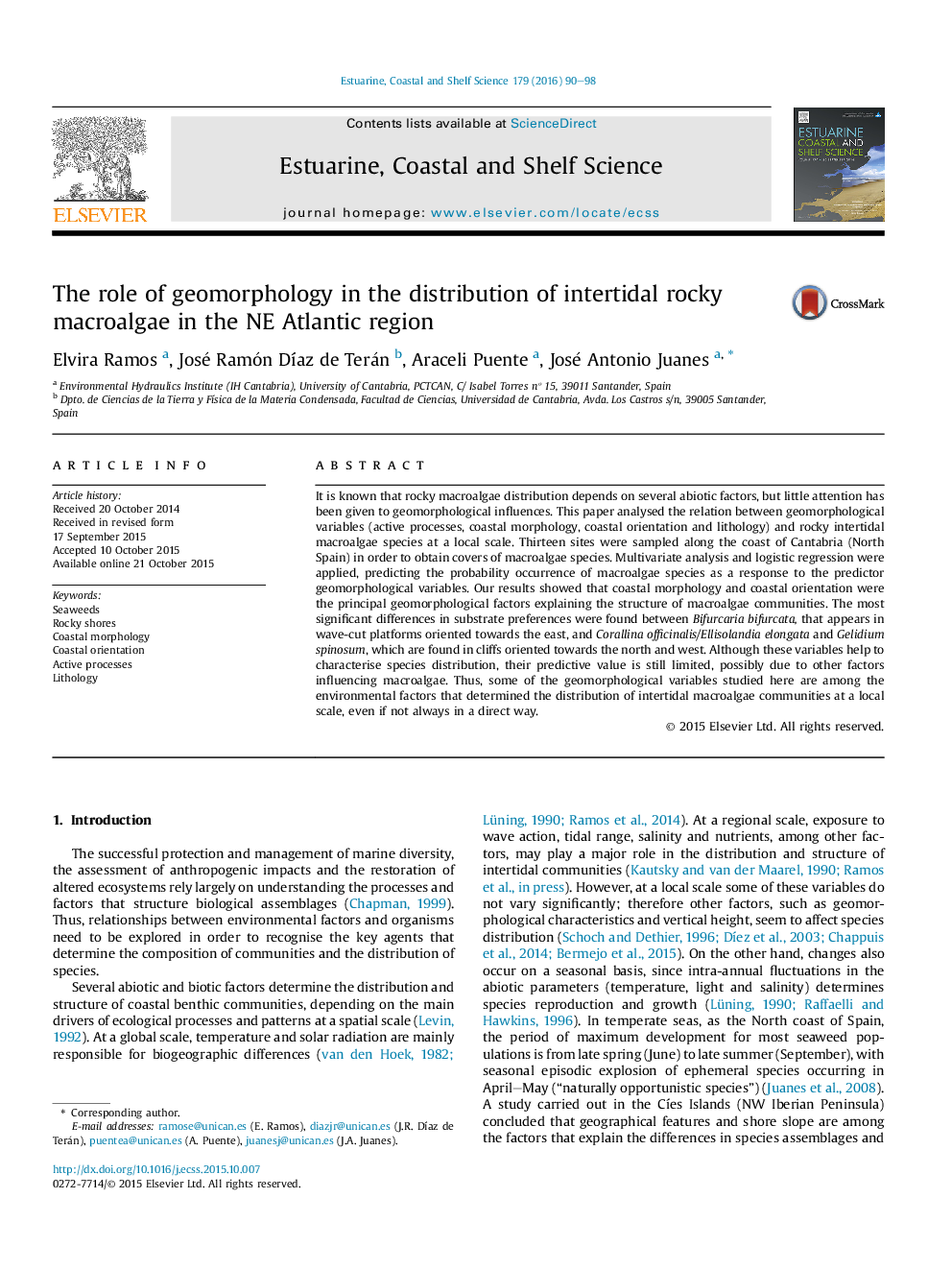| کد مقاله | کد نشریه | سال انتشار | مقاله انگلیسی | نسخه تمام متن |
|---|---|---|---|---|
| 4539195 | 1626620 | 2016 | 9 صفحه PDF | دانلود رایگان |
• The influence of geomorphology in intertidal macroalgae distribution is analysed.
• Application of multivariate analysis and logistic regression.
• Morphology and orientation are the most determining factors in species distribution.
• B. bifurcata and C. officinalis/E. elongata show opposite preferences.
• Geomorphology influences macroalgae distribution along with other factors.
It is known that rocky macroalgae distribution depends on several abiotic factors, but little attention has been given to geomorphological influences. This paper analysed the relation between geomorphological variables (active processes, coastal morphology, coastal orientation and lithology) and rocky intertidal macroalgae species at a local scale. Thirteen sites were sampled along the coast of Cantabria (North Spain) in order to obtain covers of macroalgae species. Multivariate analysis and logistic regression were applied, predicting the probability occurrence of macroalgae species as a response to the predictor geomorphological variables. Our results showed that coastal morphology and coastal orientation were the principal geomorphological factors explaining the structure of macroalgae communities. The most significant differences in substrate preferences were found between Bifurcaria bifurcata, that appears in wave-cut platforms oriented towards the east, and Corallina officinalis/Ellisolandia elongata and Gelidium spinosum, which are found in cliffs oriented towards the north and west. Although these variables help to characterise species distribution, their predictive value is still limited, possibly due to other factors influencing macroalgae. Thus, some of the geomorphological variables studied here are among the environmental factors that determined the distribution of intertidal macroalgae communities at a local scale, even if not always in a direct way.
Figure optionsDownload high-quality image (556 K)Download as PowerPoint slide
Journal: Estuarine, Coastal and Shelf Science - Volume 179, 20 September 2016, Pages 90–98
